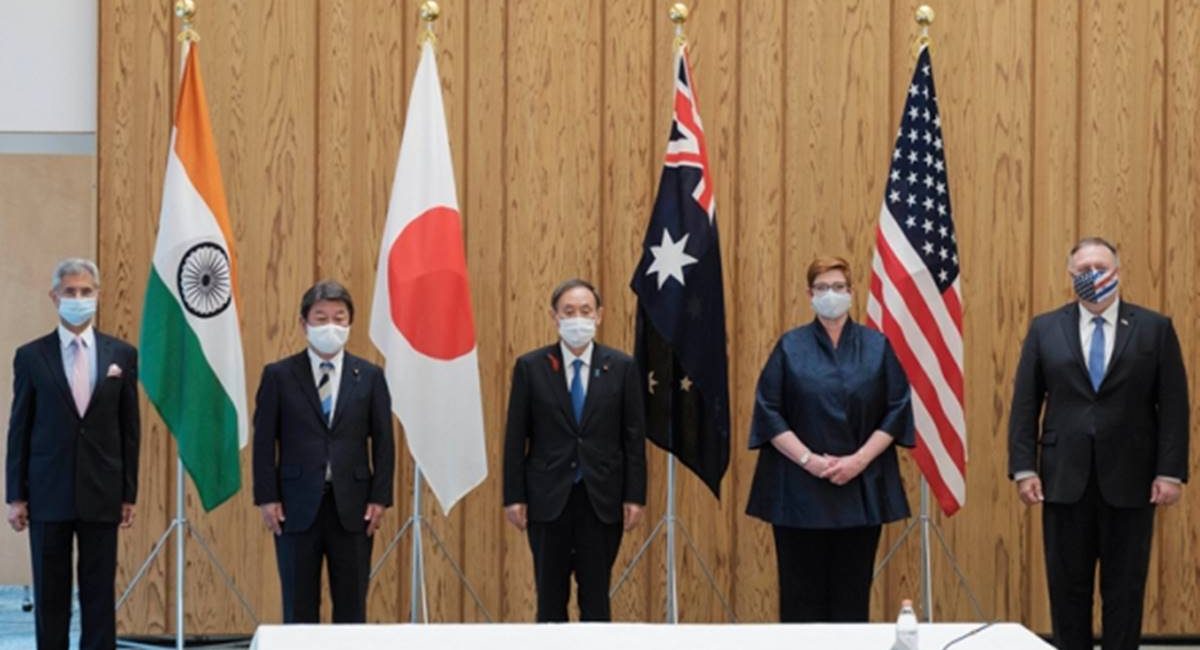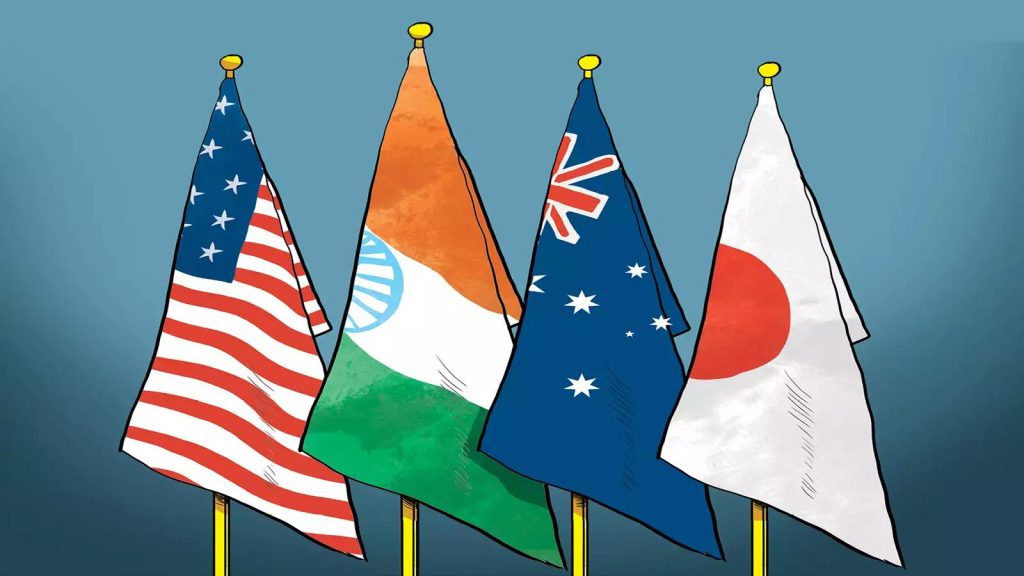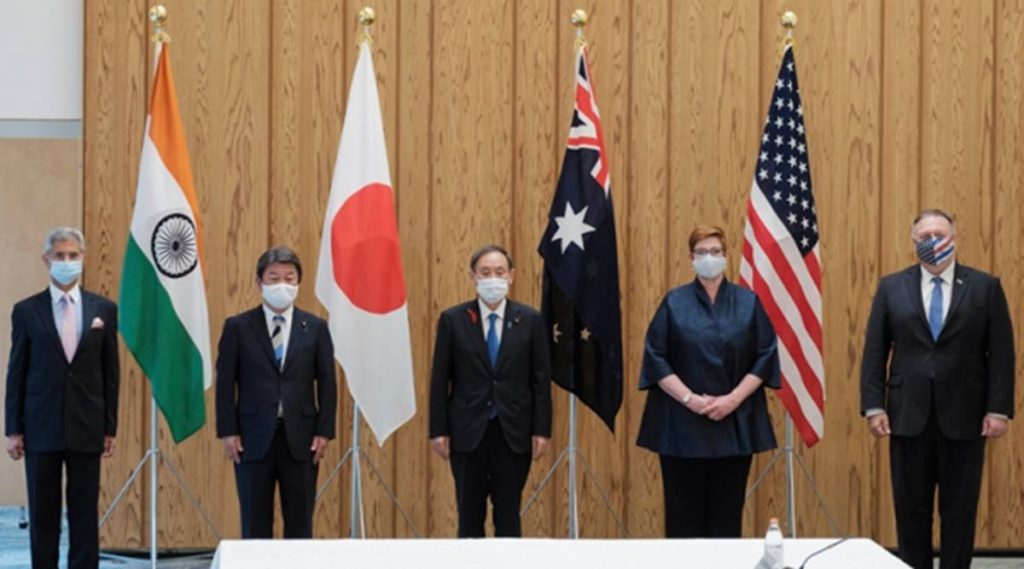General Upendra Dwivedi Takes Command As Chief Of The Army Staff
July 2, 2024

With the Asia-Pacific Region (APR) increasingly recognised as the engine and focal point of future global development and growth, it is critical to highlight the historic event taking place on 12 March 2021—the high-level virtual summit of the Quadrilateral Security Dialogue (Quad) of the United States, Japan, Australia, and India. Since 2007, at the behest of Tokyo, the Quad’s unofficial format has been pushed by its participants with varying degrees of activity, national engagement, and success.

A cursory examination of the topic publications of the top Asian—primarily Indian—analytical centers reveals the following broad findings. Predictably, the dominant narrative has been a causal relationship between the Quad’s increased activity and China’s unilateral and expansionist moves in the area. In this sense, the new US administration intends to include its regional allies, notably those in the Indo-Pacific Region, in the struggle with Beijing.
As the Quad nears institutionalisation, its participants appear committed to collaborating more closely with major regional entities. Thus, to reassure ASEAN member nations amid global turmoil, the leaders underlined their unwavering commitment to ASEAN’s unity and importance. However, several ASEAN countries are hesitant to take sides in the US-China conflict publicly. The majority of them are supportive of the United States’ involvement in the area. Simultaneously, they recognise the benefits of cooperating with China, always their primary commercial partner.
“As the Quad approach’s institutionalisation, its partners appear committed to collaborating more closely with critical regional entities. Thus, to reassure ASEAN member nations amid global turmoil, the leaders underlined their unwavering commitment to ASEAN’s unity and importance.”
Concerning France, the United Kingdom, and Germany’s aspirations to strengthen cooperation with the Indo-Pacific Region, analysts do not rule out the Quad’s future growth. While maritime safety dominated the summit agenda, the impact of COVID-19 on the economy and human health, climate change, common challenges in cyberspace, critical technologies, counterterrorism, investment in high-quality infrastructure, humanitarian assistance, and disaster relief were also discussed. The Quad leaders decided to begin a vaccination cooperation programme for the Indo-Pacific region, emphasising Southeast Asia (ASEAN), with the possibility of replication in other sectors if successful. The initiative’s declared objective is to solve a severe healthcare concern by facilitating the quick immunisation of many individuals. This idea, without a doubt, merits acceptance and support. However, a deeper examination reveals a covert endeavour to undermine China’s vaccine diplomacy—the Health Silk Road—which currently spans more than 60 nations.
In many respects, the Quad’s choice to prioritise pandemic response signals a shift in its approach to China. While the Biden administration will continue to follow Trump’s lead on this subject, it will also aim to offer value, particularly multilateralism and posing a complicated challenge to Beijing.
On the day of the conference, the Global Times—the official newspaper of the governing Chinese Communist Party—had warned that any attempt to recreate NATO in Asia would fail. Russia, for its part, has already framed the Quad as a new Western game aimed at including India in anti-Chinese measures and undermining Indo-Russian relations. Given such rhetoric, the Quad member nations’ primary objective will be to maintain a balance of economic links while also reining in China’s growth. Each of the Quad nations is highly reliant on Chinese supply networks, and each is more economically linked with China than with the others. This is especially true for India and Japan. China is either its primary or secondary trading partner. As a result, many Indian analysts predict that New Delhi would be able to revive the project and turn it into a viable alternative to China’s world factory.
Source: Google images

India is unquestionably a critical component of any strategy in the area. However, New Delhi has thus far refrained from either directly aligning with the US to control China or adding an explicitly anti-Chinese dimension to its quartet membership. Meanwhile, the rising disparity in national strength, the long-term border tension, and other considerations may compel Indian strategists to revise their doctrine of strategic autonomy and make the US the primary security provider, as Australia and Japan have done.
“India is unquestionably a critical component of any strategy in the area. However, New Delhi has thus far refrained from either directly aligning with the US to control China or from adding an explicitly anti-Chinese dimension to its quartet membership.”
The Quad can provide the groundwork for a post-pandemic global governance paradigm, but it is unlikely to evolve into a NATO-style formal security alliance. Its evolution will be decided by its capacity to combine global concerns while also serving the interests of a broader range of countries. On the other hand, whatever form the March summit ultimately takes will affect the region’s geopolitics. In principle, similar dynamics may lead Beijing to institutionalise the Himalayan Quad initiative, which brings together China, Nepal, Pakistan, and Afghanistan as a counterbalance to the Quad. The pandemic’s instability has already prompted India, Japan, and Australia to start a separate global Supply Chain Resilience Initiative (SCRI) that entails their decoupling from China. For many nations in Asia and Oceania, the primary driver of large-scale weaponry imports is the Chinese. According to the latest SIPRI estimates, this area will be the top importer of conventional weapons in 2020, accounting for 42% of global commerce. All of this occurred when India, Australia, China, South Korea, and Pakistan were the primary importers.
Indian experts used a figure of speech to describe the APR as the grand prize in the world’s geostrategic lottery and the stage upon which the current round of the great game is being played. Additionally, it is impossible to claim that the region is part of the geopolitical arena in which the heavenly empire—China—confronts both the US and the Asian status quo to pursue the Chinese aspiration of becoming a significant world power.
Thus, the inevitable and clear trend of moving the global geopolitical and economic centre to APR predicts that the next “Asian Century” will be exciting, with few remaining untouched. This refers primarily to those enthusiasts who will recognise the hidden potential and advantages of the Asian manoeuvre in a timely and correct manner from the perspective of national interests and design the outlines of their distinctive strategy for the Asian manoeuvre.
Neeraj Manhas has provided very optimistic analysis and suggested workable propositions for the Quad countries. Very readable piece of writing.